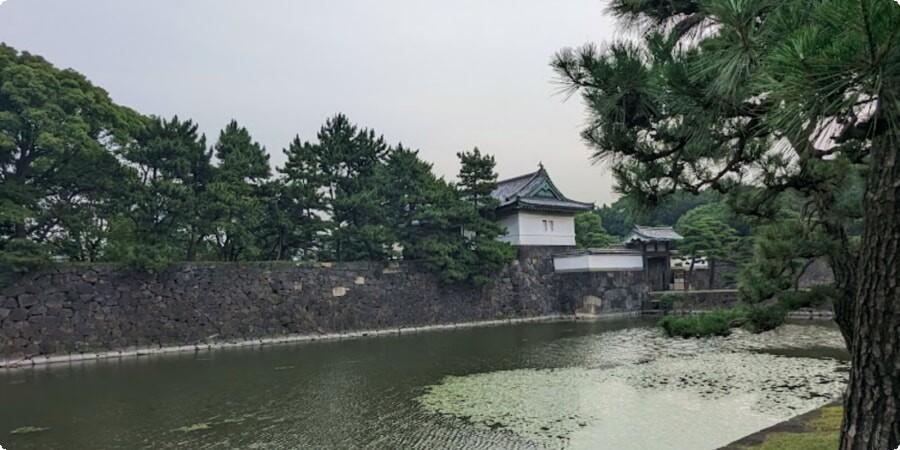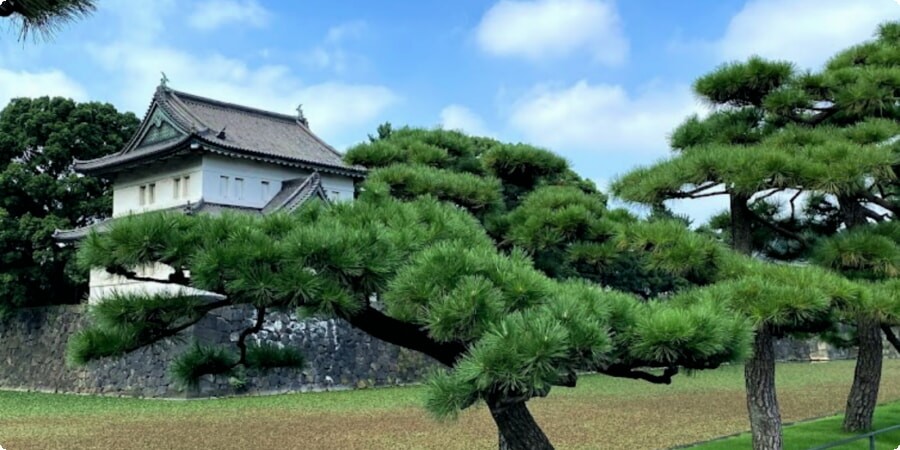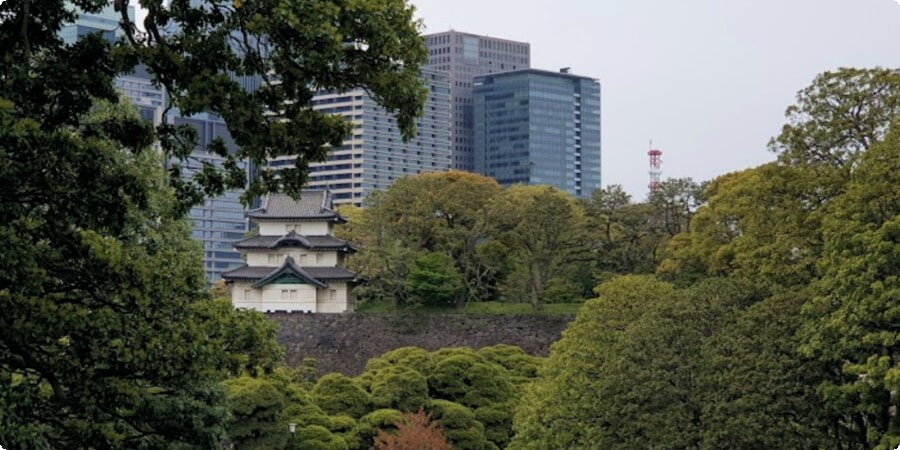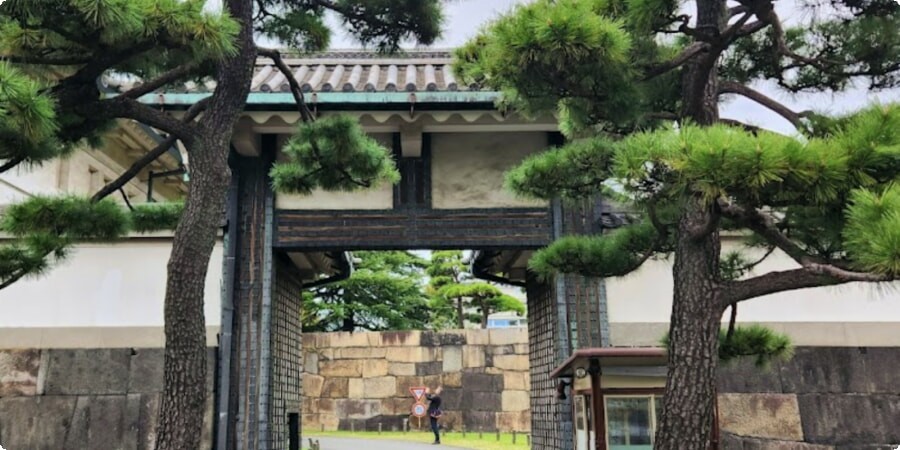Kikyō-mon Gate: A Symbol of Tradition and Continuity in Modern Tokyo
Welcome to the heart of Tokyo, where amidst the bustling streets and modern skyscrapers, stands a timeless emblem of tradition and continuity – Kikyō-mon Gate. This iconic structure, with its majestic presence and rich history, serves as a poignant reminder of Tokyo's cultural heritage and enduring legacy.
Kikyō-mon Gate, also known as the "Paulownia Gate," is situated in the heart of the city, serving as a symbolic gateway to Japan's past. Its significance extends beyond mere architecture; it represents a connection to the roots of Japanese culture, a link between the ancient and the contemporary. As we embark on a journey to unravel the mysteries and marvels of Kikyō-mon Gate, let us delve into its storied past and timeless allure.
Historical Background
To understand the significance of Kikyō-mon Gate, we must first delve into its rich historical background. Dating back to the Edo period, this magnificent structure was originally part of the Edo Castle complex, serving as one of its main entrances. Built in the traditional Japanese architectural style, Kikyō-mon Gate stood as a symbol of power and prestige, welcoming dignitaries and visitors to the seat of the Tokugawa shogunate.
Over the centuries, Kikyō-mon Gate has witnessed the ebb and flow of history, surviving wars, fires, and natural disasters. Despite the passage of time, its sturdy wooden frame and intricate carvings have remained remarkably well-preserved, a testament to the craftsmanship and ingenuity of its builders. Today, Kikyō-mon Gate stands as a silent sentinel, bearing witness to the transformation of Tokyo from a feudal capital to a modern metropolis.

Architectural Features
As we gaze upon the splendor of Kikyō-mon Gate, we cannot help but be awestruck by its architectural magnificence. The gate's distinctive roofline, adorned with ornate carvings and decorative motifs, reflects the artistic mastery of traditional Japanese craftsmen. Each detail, from the graceful curves of the eaves to the intricate lattice work of the windows, tells a story of craftsmanship and dedication passed down through generations.
One of the most striking features of Kikyō-mon Gate is its use of natural materials, including timber, stone, and clay. These organic elements not only lend the gate a sense of timelessness but also ensure its durability and resilience against the elements. As we stand before Kikyō-mon Gate, we are reminded of the beauty and elegance of traditional Japanese architecture, a harmonious blend of form and function that continues to inspire awe and admiration.
While exploring the cultural wonders of Tokyo, consider staying at one of the best hotels in the city to elevate your experience. Best Hotels in Tokyo offers a curated selection of accommodations that promise comfort, luxury, and convenience, ensuring a memorable stay in Japan's vibrant capital.
Cultural Significance
Beyond its architectural grandeur, Kikyō-mon Gate holds profound cultural significance within Japanese society. Throughout history, gates like Kikyō-mon were not merely entrances but also symbols of authority and status, marking the boundaries between the sacred and the secular. As such, Kikyō-mon Gate became a focal point for ceremonies, processions, and rituals that played a central role in the fabric of Japanese life.
Moreover, Kikyō-mon Gate is steeped in symbolism and tradition, with each element of its design carrying profound meaning. The gate's name, "Kikyō," refers to the paulownia flower, a symbol of prosperity and longevity in Japanese culture. As visitors pass through its hallowed threshold, they are invited to partake in a journey through time, connecting with the ancient roots of Japanese civilization and experiencing the enduring legacy of Kikyō-mon Gate.

Preservation Efforts
Preserving Kikyō-mon Gate for future generations is a labor of love and dedication undertaken by historians, architects, and conservationists alike. Despite the challenges posed by urban development and environmental degradation, efforts to safeguard Kikyō-mon Gate's cultural and historical heritage have been met with unwavering determination and commitment.
Through meticulous restoration projects and conservation initiatives, experts work tirelessly to protect Kikyō-mon Gate from the ravages of time and ensure its continued existence as a symbol of tradition and continuity in modern Tokyo. From reinforcing its wooden structure to repairing weathered carvings and replacing worn-out components, every effort is made to maintain the integrity and authenticity of Kikyō-mon Gate for generations to come.
Contemporary Relevance
In the ever-evolving landscape of modern Tokyo, Kikyō-mon Gate retains its timeless allure and relevance as a symbol of tradition and continuity. While skyscrapers and neon lights dominate the city skyline, Kikyō-mon Gate stands as a beacon of stability and permanence, reminding Tokyoites and visitors alike of the importance of preserving their cultural heritage in the face of rapid urbanization and globalization.
Moreover, Kikyō-mon Gate continues to play an active role in the daily lives of Tokyoites, serving as a gathering place for cultural events, festivals, and ceremonies that celebrate Japan's rich heritage and traditions. Whether it's the vibrant colors of cherry blossom season or the solemn rituals of New Year's prayers, Kikyō-mon Gate serves as a backdrop for countless moments of communal celebration and reflection, fostering a sense of unity and continuity in an ever-changing world.
As you plan your visit to Japan and explore its cultural treasures, consider booking a hotel through Best Hotels in Japan, offering a curated selection of accommodations that promise comfort, luxury, and convenience throughout your journey.

Visitor Experience
Visiting Kikyō-mon Gate is not just a journey through history; it's an immersive experience that allows visitors to connect with Japan's rich cultural heritage on a personal level. As you approach the gate, you'll be greeted by its imposing presence and intricate details, inviting you to pause and reflect on the centuries of history that have unfolded beneath its arches.
Guided tours are available for those seeking a deeper understanding of Kikyō-mon Gate's significance and architectural features. Knowledgeable guides lead visitors through the gate's storied past, sharing insights into its construction, symbolism, and cultural importance. Whether you're a history buff or simply curious about Japan's traditions, a guided tour offers a fascinating glimpse into the world of Kikyō-mon Gate.
For independent explorers, self-guided tours are also an option, allowing you to wander at your own pace and soak in the ambiance of Kikyō-mon Gate at leisure. Take your time to admire the intricate carvings, snap photos of the gate's majestic facade, and contemplate the significance of this timeless monument in the heart of Tokyo.
Local Community Engagement
The preservation and promotion of Kikyō-mon Gate would not be possible without the support and involvement of the local community. Residents, businesses, and cultural organizations band together to raise awareness about the gate's historical importance and advocate for its continued protection.
Community events and initiatives centered around Kikyō-mon Gate serve to foster a sense of pride and ownership among local residents, encouraging them to take an active role in safeguarding their cultural heritage. From volunteer clean-up efforts to educational programs for schoolchildren, the community's dedication to preserving Kikyō-mon Gate ensures that its legacy will endure for generations to come.

In conclusion, Kikyō-mon Gate stands as a testament to Japan's rich cultural heritage and enduring spirit. From its humble origins as a gate to Edo Castle to its status as a symbol of tradition and continuity in modern Tokyo, Kikyō-mon Gate has weathered the storms of history and emerged stronger than ever.
As visitors from around the world flock to Tokyo to marvel at its skyscrapers and neon lights, Kikyō-mon Gate remains a beacon of stability and permanence, reminding us of the importance of honoring our past while embracing the future. Whether you're a history enthusiast, a cultural connoisseur, or simply a curious traveler, a visit to Kikyō-mon Gate promises to be an unforgettable journey through time and tradition.